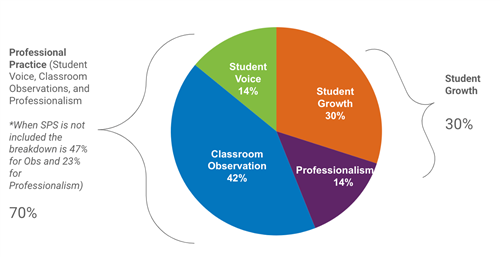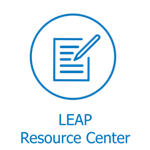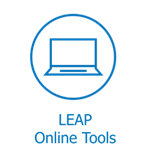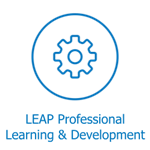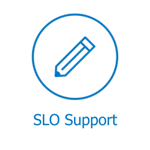LEAP

-
Important Announcements
-
Need a visual for an overview of all of your formal observation scores? Use this tool!
The LEAP End of Year (EOY) conversation window is open from April 7 - May 16, 2025.
-
May 7 - Last day to conduct scored LEAP classroom observations for all teachers
-
May 16 - LEAP and SSP EOY Conversations Window Closes (See statute regarding teachers receiving draft evaluations two weeks prior to the last day of class)
-
May 16 - SLOs, SSOs, and MSOs are due
-
May 21 - Deadline for teachers to be given their LEAP EOY Overall Ratings (best practice is to have these done via EOY Conversations)
-
May 23 - All LEAP and SSP EOY evaluations are final in the DPS Growth and Performance System (DPS GPS)
SEE MORE DETAILED LEAP PLANNING CALENDAR HERE!
-
Content Accordion
-
Mid-Year & End-of-Year Preparation
Successful growth engages teachers in these important conversations in many forms. This guide was built to support your conversations throughout the year so that Mid-Year and end-of-year conversations are not a surprise but a more formalized checkpoint to reflect and discuss a teacher’s practice, including their career aspirations.
LEAP MY and EOY Planning & Conversation Guide
LEAP EOY Interactive Calculator
LEAP Planning Calendar 2024-25
Checklist: School Leader Responsibilities: Is your ILT prepped and ready for conversations? Have you communicated your plan to your ILT and staff? Use this handy checklist to backwards plan and make sure you are ready!
Checklist: Evaluator Responsibilities at MY and EoY: If you have any teachers on your caseload, this is the checklist for you! This is for ILTs and School Leaders.
Guided Conversation Templates for MY and EoY: Sample structure, talking points, and suggestions for your conversations.
Teacher Mid-Year and End-of-Year Conversation Checklist
Email Templates: Emails are recommended (and Best Practice!) for all teachers as a follow-up to the conversation, but most importantly for any teachers at risk of non-renewal, losing NP status, or at risk of earning an NM or A rating. As always, feel free to personalize as you see fit and/or use agreed-upon templates from your ILT.
Rationale Statements- Professionalism Indicators w Instructional & Professional Concerns: ILTs should norm on how to communicate the basis of their decisions with a rationale so the teacher understands the decision. Writing and recording this rationale, even when you’ve had the in-person conversation, supports you and the teacher in having the understanding to reference and leverage going forward.
-
GPS User Guide Support
Please see the following GPS User Guides
LEAP Evaluation Cycles - GPS User Guide
FOR ALL GPS GUIDES PLEASE GO TO THE GPS PAGE
-
Professionalism Norming
Review resources and make a plan for Professionalism Calibration. (Recommended as an ILT activity before Mid-Year Conversations.)
-
New LEAP Framework for Non-Instructional and Itinerant (NII) Teachers
LEAP NII, a specialized version of the LEAP framework, was launched in the 24-25 school year to create a more fitting evaluation model for non-instructional and itinerant teachers. In addition to non-instructional and itinerant teachers, the NII framework is a better fit for a small, specific group of school-based teachers. It is important to be aware of the basics of the NII framework if you are assigned as an evaluator for a teacher evaluated as an NII.
-
What is LEAP?
LEAP, or Leading Effective Academic Practice, is our growth and performance system for teachers. LEAP is a multiple measures system that is aligned to academic standards and affords teachers the opportunity to reflect on practice and to make shifts in instruction and support based on a variety of data, including observations, professionalism, student voice, and student growth. This holistic approach looks at multiple factors contributing to a teacher’s effectiveness, not just at one dimension of teaching.
Rooted in the shared core value of “Students First,” the LEAP system provides a framework for recognizing that, as professionals, teachers require (and deserve) clear standards of performance, honest assessments of their strengths and areas for growth, helpful feedback, and support for further development. LEAP is designed to make teacher evaluation more meaningful, enable teachers to continue to develop as professionals, and improve student performance.
Ultimately, LEAP is one part of the whole system that ensures students are thriving, not by accident but by design.
How was LEAP designed?
Please click here to learn more about the development of LEAP.
Multiple Measures
Multiple Measures
-
Student Growth
Student Growth measures how teaching impacts student academic learning and growth. When taken into account with other measures of teacher performance, student academic outcomes provide a more holistic picture of the learning that results from teacher actions over the course of a year. The LEAP system utilizes multiple measures of student academic growth, including:
- Student Learning Objectives (SLOs): Measures students’ progress toward mastery of the Colorado Academic Standards and includes multiple sources of evidence, such as interim assessments, performance tasks, and unit assessments. Learn more on SLO section in The Commons.
- OR Student Service Objectives (SSOs) for NII teachers: NIIs focus on high-impact criteria, set ambitious goals, and measure students’ progress toward attaining them. This process will yield greater student outcomes by allowing NIIs to strategically plan from an end vision of student outcomes.
- Collective Measure: School-wide Student Growth Measure on SPF. (NIIs create a collaborative SSO)
By assessing multiple areas of each teacher’s performance, LEAP creates a robust method for capturing a teacher’s performance effectiveness. Rooted in the shared core value of “Students First,” the LEAP system provides a framework for recognizing that, as professionals, teachers, and school leaders require (and deserve) clear standards of performance, honest assessments of their strengths and areas for growth, helpful feedback and support for further development.
Logistics & Timing:
SLOs/SSOs are set in the fall, and end-of-course levels are finalized in the spring. -
Student Perception Survey (SPS)
The Student Perception Survey represents the voice of the students. The SPS includes three categories of each teacher’s practice as perceived by their students:
- Facilitates Learning
- Communicates High Expectations
- Supports Students
Students take surveys for their teachers to ensure they do not take more than 2-3 surveys, and as many teachers as possible receive surveys from a representative population of their students.
Logistics & Timing:
The SPS is administered twice yearly in late fall to grades 3-12 students. There is a spring administration window in February for those hired late or on leave during the fall window. (all other teachers have a choice to opt-in for a second round, knowing the scores aggregate with those from the fall)ECE-2nd grade students do not participate in the SPS.
SPS Resources
The Student Perception Survey (SPS) provides teachers and school leaders with a unique perspective on teachers’ educational practice as experienced by students. Teachers and school leaders can utilize the SPS data to better understand students’ experiences and then reflect on strengths and growth areas aligned to the SPS constructs, LEAP framework, and professionalism framework to improve practice and help every child succeed.
-
Professionalism
The third domain of the DPS Framework for Effective Teaching, Professionalism, reflects the off-stage, individual, and collaborative teacher behaviors that impact planning, instruction, and student learning.
Professionalism includes observations of and feedback on each teacher’s contributions outside of classroom instructional time, i.e., contributions to school teams, use of data and planning, collaboration with parents, and overall impact on the school culture. Professionalism is assessed by School Leaders formally at Mid-Year and End-of-Year conversations, however leaders should capture notes and have feedback conversations regarding Professionalism throughout year.
Professionalism is rated collaboratively by school-based evaluators (i.e., school leaders and Senior Team Leads).
Logistics & Timing:
School leaders enter formal Professionalism notes and ratings for each indicator at mid-year and end-of-year. School leaders are encouraged to provide evidence with each rating in written form or during conversations. The best practice is to assess the teacher’s practice on each indicator holistically rather than focus solely on isolated events. To assist with this, leaders can capture notes regarding Professionalism throughout the year in the GPS.Only the leader's end-of-year ratings are used in the calculation for the overall performance rating. Before the mid-year and end-of-year conversations, teachers reflect and rate themselves on Professionalism and are encouraged to capture ongoing notes in the GPS to reference during their mid-year and end-of-year conversations.
-
Observation
Evaluators observe a teacher’s classroom practice, collect evidence, align the evidence to the Framework for Effective Teaching, arrive at an indicator score to help capture the level of performance, and identify strengths and opportunities for growth.
Using the first two domains of the DPS Framework for Effective Teaching, Learning Environment and Instruction, evaluators observe a teacher’s classroom practice, collect evidence, align the evidence to the Framework for Effective Teaching, arrive at an indicator score to help capture the level of performance, and identify strengths and opportunities for growth.
Then, the observer reviews the evidence, plans feedback, documents the observation and feedback, and conducts a meaningful feedback conversation that provides teachers with the next steps for improvement and suggests further professional learning opportunities.
Observers: Who Can Conduct Observations and Mid-Year and End-of-Year Evaluations?
- School Leaders and Peer Observers who have been trained and certified under the District’s system are allowed to perform observations. School Leaders include: Principals, Assistant Principals, Teacher Leaders (Senior Team Leads and Team Leads), Deans, Principal Residents and Principal Interns, Instructional support roles such as Collaborative Directors, or other trained designees.
- With the exception of Team Leads and Peer Observers, all of the observers mentioned above may complete MY and EOY evaluations.
Logistics & Timing:
- Throughout the school year—observations typically start in early September (two weeks after school starts) and are typically completed about three weeks before the last day of school.
- Teachers receive 3 formal observations during the year after Coaching Cycles.
- See the LEAP Timeline HERE
CONTACT
-
Your input is important to us
Share your feedback
720-423-2600 or LEAP@dpsk12.orgStacey Sheehan-Block, Site Manager
Lisa Garcia Simms, Senior Manager of Frameworks (LEAP and SSP GPS)
QUICK LINKS
-
LEAP Handbook 2024-2025 Please review and bookmark for important updates and resources!
LEAP Framework for Effective Teaching (FET)



